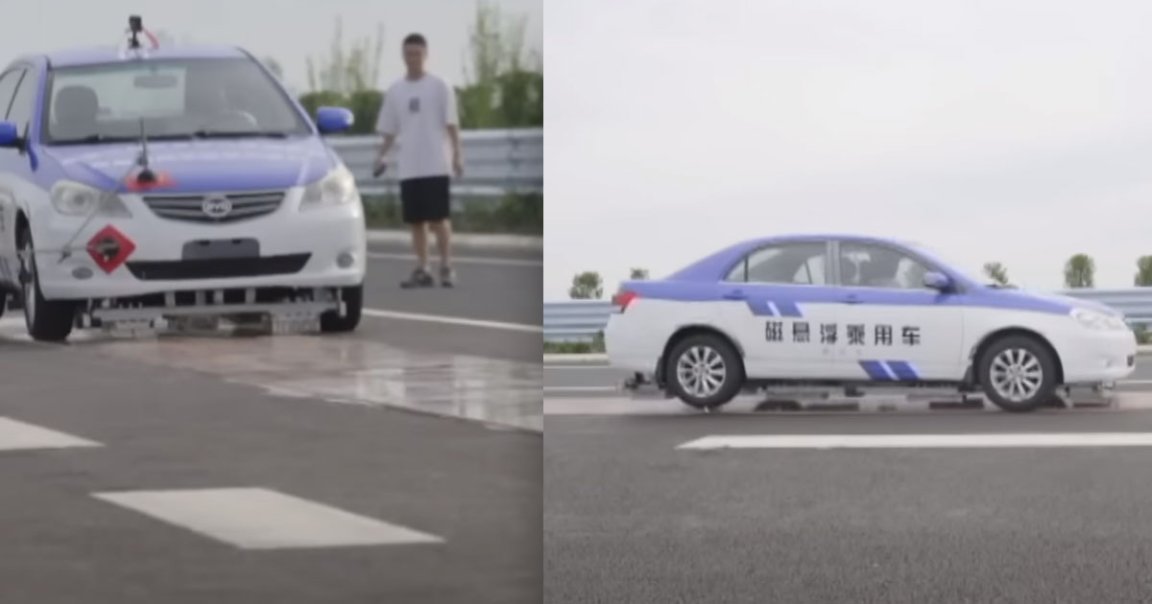
Maglev Cars
Chinese researchers at Southwest Jiaotong University have tested modified cars capable of magnetically levitating almost an inch and a half off of the ground over a stretch of specially modified highway, state-run media outlet Xinhua reports.
A video of the test shows a modified passenger vehicle gliding along the surface, while its four tires spin helplessly in the air, rendered useless by what appear to be magnetic repulsors attached to the bottom of the vehicle.
Is this really the “Back to the Future”-esque future of the car? The researchers behind the test are hoping maglev cars could reduce energy consumption.
But judging by the clunky equipment and rocky ride seen in the video, immense engineering challenges — and likely safety ones, as well — remain before the tech could possibly become practical.
Glide in Style
Details surrounding the test are still sparse. According to Xinhua, eight modified vehicles were tested on a roughly five mile stretch of highway.
Both the roadway, located in the eastern province of Jiangsu, and the vehicles themselves had to be heavily modified to pull off the stunt. Engineers added an array of permanent magnets to the floor of the vehicles, while running a conductor rail along the length of the highway.
The speed was also striking, with cars reached a reported velocity of 143 mph. While that’s pretty fast, it’s still a far cry from the country’s maglev bullet trains, the fastest of which can reach speeds of up to 373 mph.
China also announced the construction of the “country’s first independently-developed trial line” using maglev technologies, Xinhua reported last month.
READ MORE: Maglev car technology tested on highway in East China [Xinhua]
More on maglev: Startup Says Train Powered by “Veillance Flux” Could Travel 620 MPH